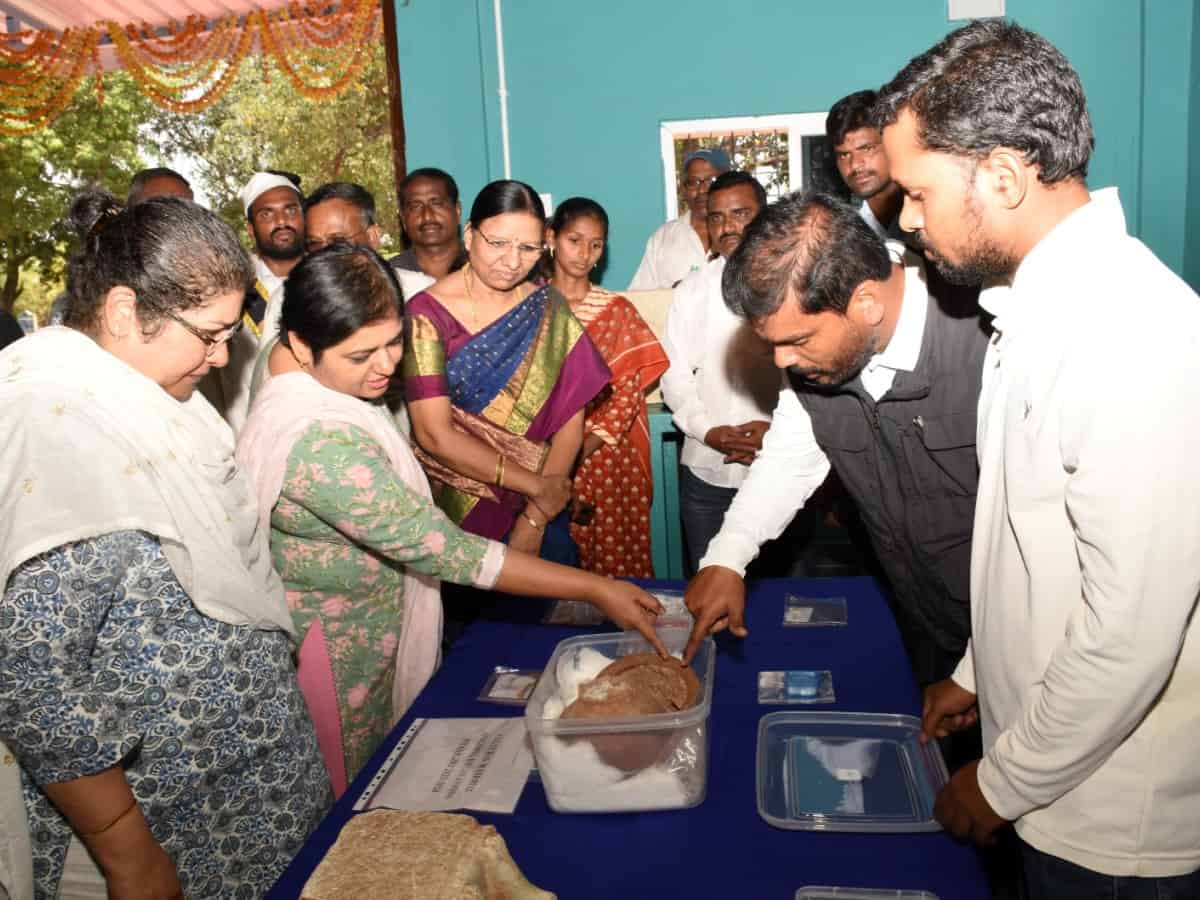
Hyderabad: In a significant discovery by Telangana Heritage department, nearly two millennia old coins dating back to the Ishvaku period in Phangiri village were discovered. The ancient coins were discovered about 110 kilometres away from Hyderabad, in a pot measuring 16.7 centimetres in diameter and 15 CM in height that was excavated on March 29 at an early historic site at the village in Surypet district.
The Ishkvaku, also known as the Andhra Ishkvaku kingdom, is believed to have flourished for a century between the third and fourth centuries in areas of present day Telangana /Andhra.
After the pot was discovered during the excavations, department officials realised that the pot was filled with lead coins. “All the coins were taken out from the pot and counted, the coins are three thousand seven hundred thirty (3730) in number and the average weight of each coin is 2.3g. After close observation by the team it came to know that all coins are similar and made of lead,” said a press release from the Department of Heritage on April 4.
Phanigiri village lies on the left bank of the rivulet Bikkeru, a tributary of the river Musi located in Nagaram Mandal, Suryapet District. “In Sanskrit , Phani means snake and Giri means hillock. This village was occupied by pre/proto-historic, early historic, early medieval and Asaf Jahi period inhabitants. This village had a vibrant life from 1000 BCE to late 18th century CE,” said the release.
The village is located about 35 Kms from Suryapet, the district headquarters. According to the Heritage department, the village Phanigiri seems to have derived its name from the shape of a hillock located on the northern side of the village, which appears to be like a snake hood.
The early historic site at Phanigiri was first discovered and protected during the period of the last Nizam of Hyderabad and was excavated from 1941 to 1944 by Khaja Mahamad Ahmad. Phanigiri however is not a lone site in this zone as there are several Buddhist sites in the proximity of the site such as Vardhamanukota, Gajulabanda, Tirumalagiri, Nagaram, Singaram, Aravapalli, Iyyavaripalli, Arlagaddagudem, Yeleswaram etc.
“It is one of the important Buddhist monasteries strategically located on the hilltop, on the ancient trade route (Dakshinapatha) connecting the west and the east coast of the Deccan. This evolved Buddhist monastery surpasses the monasteries at Amaravathi and vijayapuri (Nagarjunakonda) in Andhrapradesh,” said the department.
Excavations in and around Phangiri have been carried out for seven field seasons there during 2001-2002, 2002-2003, 2004-2005, 2006-2007, 2010-2011, 2013-2014 and 2018-2019. It led to the discoveries of a Mahastupa, apsidal Chaityagrihas, Votive stupas , pillared congregation halls, Viharas, platforms with staircases at various levels, octagonal stupa chaitya, 24 pillared mandapa, circular chaitya, the cultural material that includes terracotta beads, semi-precious beads, iron objects, shell bangle pieces, coins, stucco figures, Brahmi lable inscriptions and holy relic casket.
All the items in and around Phanigiri are is datable from the first century BCE to the fourth century CE.
Findings in this season:
In the latest excavation, important antiquities found are beads of stone and glass, shell bangle fragments, stucco motifs, broken lime stone sculptures, toy cart wheel, iron nails, lead coins, and have been the important findings, apart from the coin hoard.



